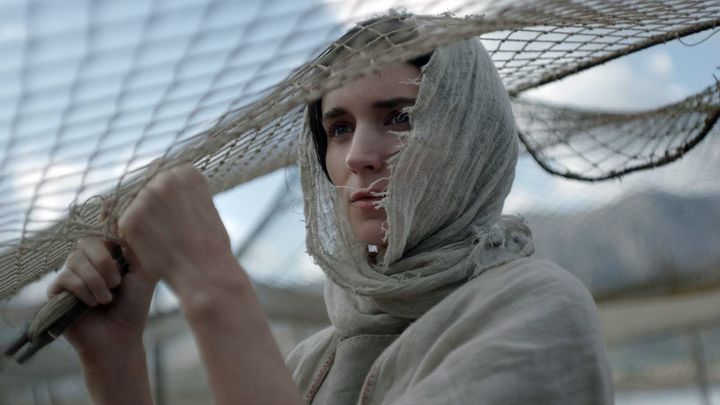
Mary Magdalene’s legacy is cloaked in myth, misinformation and misogyny.
Characterised as a penitent prostitute who atones for her shady past by joining up with Jesus, the truth is, no gospel suggests that the first century, Jewish, Middle Eastern woman ever traded in sex. The lie began to persist in the sixth century, when Pope Gregory pulled an absolute zinger and gave a sermon conflating her with an anonymous woman looking for forgiveness from Christ and his crew.
It’s a smear that’s resulted in the degradation of her remarkably feminist, progressive life story. It’s a smear that is familiar now — a powerful man spreads falsehoods about a woman’s sexual history, to undermine all the cool stuff she’s done. And it’s why I am beside myself about how the freshly released reclamation job film about her life, starring Rooney Mara as the saint and Joaquin Phoenix as Jesus, is lighting up Mary’s relevance with its revisionist portrayal.
Sure, the reviews are in and largely paint the offering as tepid. So long as we’re talking about her in the context of who she really was and the significance she carries, I’m not too fussed.
Digging, deeply, into the forgotten history of this firecracker has been mostly academic for a long time. The popular imagination still sees a twisted dichotomy of women in the Christian tradition: you can look to the untainted forever virgin who still completes her biological destiny to become a mother — or a girl who sold sex before begging forgiveness and fading into quiet service to a man. Neither of these is particularly satisfying.
For those of us with Catholicism running through our chromosomes, coaxing the true Mary out of the embers of a papal patriarchy bonfire means something. Doesn’t matter if we’re practicing, lapsed, or a foggy place in-between. And so this getting into the cultural spotlight makes me happy, even if the film isn’t going to turn The Academy’s heads.
Its stars say that we’ll see Mary’s life as it’s actually told in the gospels: prised apart from the centuries of lies that have been layered onto her story.
Things like how she flipped the conventions of the day by not marrying. How she disobeyed her family to pursue the life she wanted, aligning herself with a radical preacher with disruptive tendencies and a flair for pissing off the powerful. How she was the first to witness JC after his resurrection. (This being the event which all Christian theology swirls around is seismic: a woman was present at the single most significant thing which happens in the New Testament.)
For me, this reclamation isn’t just important for pushing back on years of patriarchal bullshit, it’s also because her name was lent to one of the most insidious institutions of recent times: Magdalene Laundries.
First conceived of in Victorian England, the model carried to Ireland in 1767.The institutions, however, became more plentiful there in 1922, when the newly established free state, having won independence from British colonial rule, was short of funds. As such, it was happy to let the Church take on the expensive task of welfare provisions.
Not solely for unmarried mothers, the homes were places in which ‘wayward’ girls could be sent for any number of reasons. The cause for the ‘Magdalene’ title was clear: let the detained women go from sinners to holy, in the manner of Mary, as her tale was understood. Survivors have told of how they landed there after ‘stealing’ apples from an orchard, famished at their Church-ran children’s home; for displaying signs of rebellion and surliness or for the crime of having nowhere to go after being orphaned. Some ended up in the institutions after being raped or sexually abused, the ‘shame’ of their victimhood meaning they needed to be sent away. No such punishments would be granted to the perpetrators. The last was closed in 1996.
Re-wiring our minds to see who Mary was isn’t just about doing the right thing for the person herself. It’s for the women who stood in the festering heat and steam of laundry rooms for six days a week, told they were ‘whores’ and wretchedly hoping for the day that their ‘sin’ may be sufficiently atoned for and they might see home again.
It’s for us now, when we are yelling that time is up and having to protest misogynists taking up places at the pinnacle of power.
Mary may have died around 2,000 years ago but bloody hell, we can use the fearless, independent, free-thinking, authentic her as a role model now. She’s waited long enough for her true message to sink into our minds.
Let’s channel the hell out of it.
